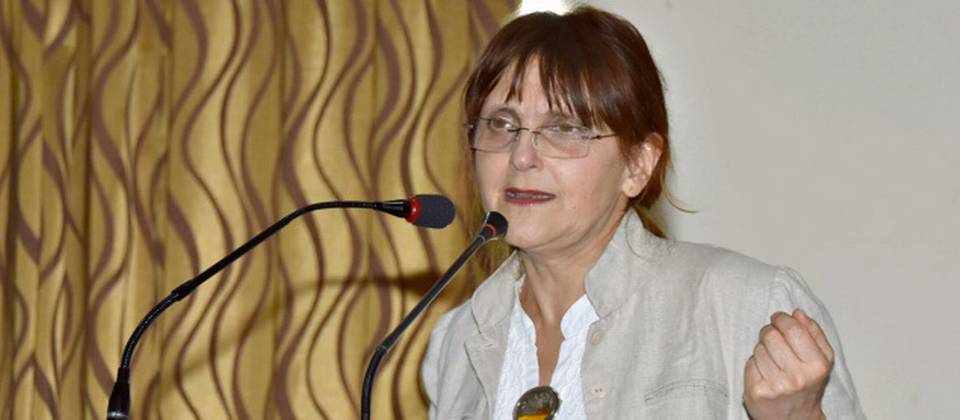
‘They, based on the Jataka Tales, claimed that the Buddha was originally a Christian’
Research Fellow and an authority on Buddhist art and architecture Monika Zin has traced the root of a beautiful, early third century Buddhist relief found during excavations in the Amaravathi sites to the Jataka Tales in the Panchatantra and how the Christian Missionaries, who used the translated version of the Panchatantra from Persian, Arabic and other languages, converted a large number of Japanese to Christianity with the claim that the Buddha was originally a Christian.
Delivering a lecture at the Central University of Karnataka at Kadaganchi in Aland taluk in Kalaburagi district, Prof. Zin, who is a KHK Visiting Research Fellow 2015 and Associate Professor, Indian Art History in the Department of Asian Studies, Institute of Indology and Tibetology at Ludwigs-Maximilian Unversitat Munchen in Munich in Germany, said that the relief found at the Nagarjunakonda Museum in Telangana has striking similarities in the figures shown in the Panchatantra translated into Pahlavi language and later into Arabic and other languages.
The beautiful relief
Prof. Zin said that the beautiful relief, which is still intact, shows an unidentified king, initially looking angry, being prevented by a couple of women from attacking a sage and later, paying obeisance to the sage. It has an interesting scene of a man hanging over a well holding onto two branches of a tree over which are a tumbling elephant and a white and black mice. In the well below, there are four figures of serpents creeping up and another with its fangs open.
She said that this picture of a man hanging from two branches of a tree over a well and all the other details is found in all translations of the Panchatantra in other languages. The Panchatantra tales were first translated for the Persian royals in Pahlavi language in the sixth century and later, into Arabic in the eighth century. In both these translations, the sequence of this relief is brought out in a pictorial form with all the details. It was the translation of the Panchatantra first to Pahlavi language and later to Arabic language that led to the translation of the tales into other languages.
However, the translation of the Jataka Tales by John of Gapna in the 13th century to Latin language was significant as it also carried the details of the relief in pictorial form.
The Greek translation in the 10th century of the Panchatantra titled “Barlaam and Josephat” was used by the missionaries working in Japan to claim that the Josephat in the tale was the original Buddha and that he was a Christian, leading to conversion of a large number Japanese to Christianity.
source: http://www.thehindu.com / The Hindu /Home> News> States> Karnataka / by Special Correspondent / Kalaburagi – January 13th, 2016